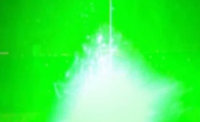U.K. plane forced to return to airport after laser hit

A Virgin Atlantic plane headed for New York’s JFK airport was forced to return to Heathrow airport shortly after takeoff last night after its pilots were affected by a laser pointed at the aircraft.
“The decision was taken by both pilots to return to Heathrow rather than continue the transatlantic crossing,” said the company in a statement.
There were 252 passengers on board the plane.
Why it's dangerous
While small at its source, laser light expands over distances and can temporarily blind pilots when it hits a cockpit window. Some pilots have had to be grounded while recovering from eye strain and injury caused by lasers. The U.S. Transportation Security Administration notes on its website that a beam from a laser pointer – even from up to a mile away – is powerful enough to light up a cockpit “like a camera flash going off in a pitch black car at night.”
Incidents on the rise
This is one of the most serious incidents to date involving lasers and aircraft. A total of 414 laser incidents were reported to the UK’s aviation authority between January and June of last year.
The U.S. Federal Aviation Administration (FAA) says the number of incidents reported has increased sharply since it created a formal reporting system for pilots in 2005. Dozens of cases are under investigation in the U.S. and 28 people so far have been charged with aiming a laser device at an aircraft.
The maximum penalty for one laser strike in the U.S. is $11,000. The FAA is pursuing stiffer penalties for offenders.
Looking for a reprint of this article?
From high-res PDFs to custom plaques, order your copy today!





